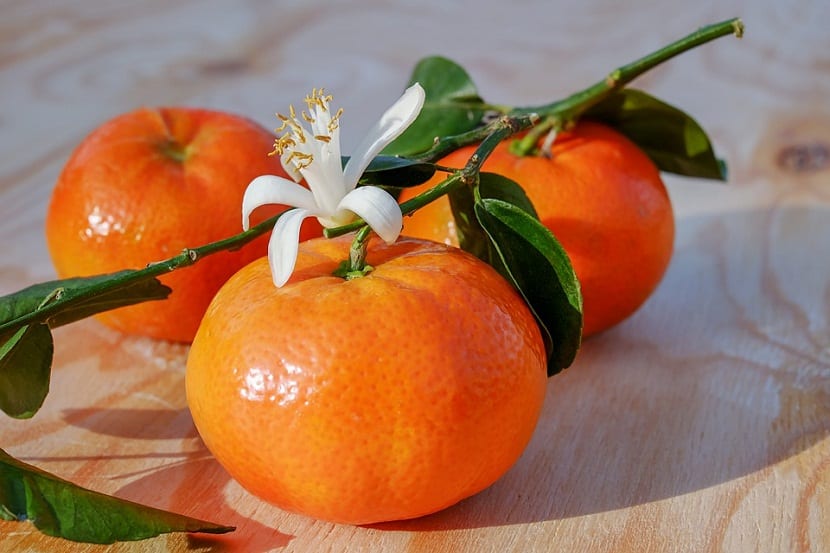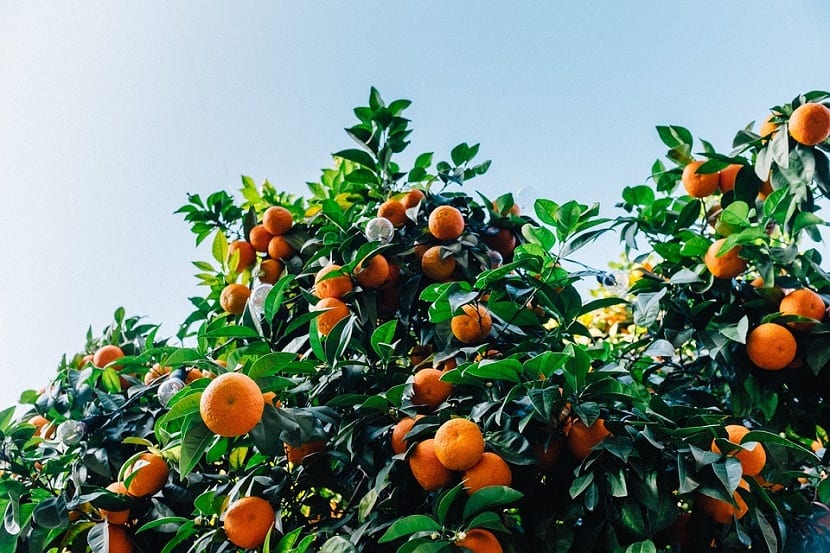
Clementine is a fruit that comes from a tree known as clementinero or citrus clementina. This tree is the result of the mixture of the delicious citrus, better known as mandarin and the citrus sinensis or orange tree as it is commonly known.
The first time that this fruit was known was during the nineteenth century, by the religious Clemente Rodier, he discovered that in the mandarin crops that were inside the Misserghim orphanage in the Algerian region, a natural hybrid had been created between an orange tree and a mandarin tree.
Clementine characteristics
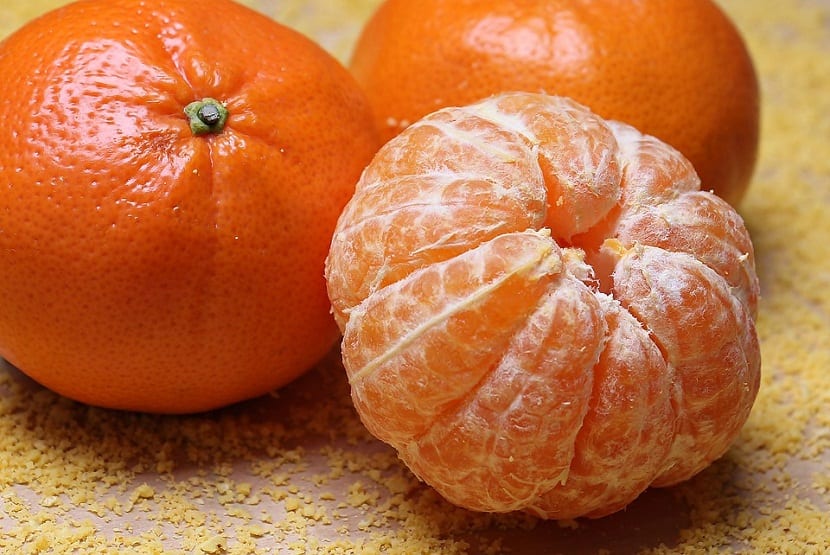
One of the most notable characteristics of clementines is that they have no seeds. They have a very fine skin covered by an orange color with a reddish tone, their shape is round and at the same time somewhat flat. Its flavor is bittersweet and can be peeled easily.
Clementines leave behind their peculiarity of seedless fruits, after they the bees end up fertilizing their flowers with pollen from other citrus plants found in the surroundings. This is one of the most frequent causes of discussion among some beekeepers who raise their bees very close to the fields and farmers of this citrus fruit.
Differences between clementine and mandarin
It is very difficult to differentiate a clementine from a tangerine since the two are very similar, however, both are one of the many varieties that exist of oranges.
In order to differentiate them, we can take into account the following:
- Clementine is slightly smaller than mandarin.
- The peel of the mandarin oranges are closer to the meat.
- Clementines do not have seeds as they are hybrids.
- The taste of clementines is sweeter.
- Mandarin season is fall, while clementine season is winter.
- Clementine has a higher amount of vitamin C than mandarin.
Clementine properties
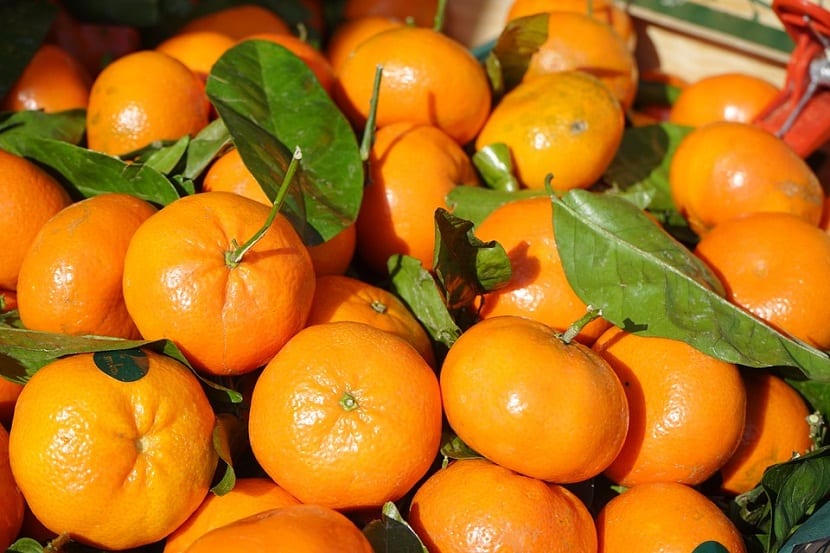
The fruit of clementines is part of the great diversity of the citrus family. Not only do they taste great, too have great health benefits, for example:
Improve our immune system
When we refer to the improvement of the immune system of our organism, the apple is the one who takes the lead, however, the clementine also has the ability to practically contribute the same amount of benefits as the apple.
This is all because clementine is high in vitamin content C, which is very important to reduce the effects caused by some diseases. In general, every time we get sick, our vitamin C levels tend to decrease very quickly, for this reason the consumption of clementine is ideal to bring these levels to normal.
Improves brain function
The vitamin C found in clementine, works as a antirust by preventing cells within the brain from being harmed in any way.
Likewise, it offers our brain additional protection against diseases such as: Alzheimer's and Parkinson's disease, Among others.
Provides improvements to heart health
Clementine helps a lot in improving the functions of our heart and this is due to the antioxidant that this fruit contains. Thanks to different tests carried out, it has been shown that the regular consumption of this citrus fruit, lowers the risk of heart disease.
Remarkably improves eyesight
The high content of vitamin C found inside clementine is very recommended especially for older adultsas it can prevent the appearance of cataracts.
Helps to anticipate the appearance of cancer
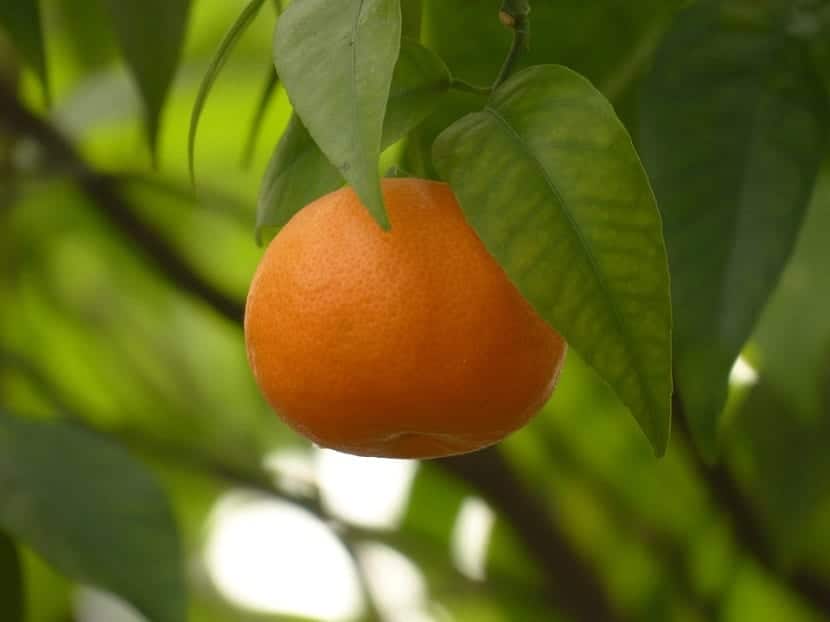
Due to certain analyzes carried out by experts, consuming 205 milligrams of vitamin C every day reduces the risk of breast cancer in women. This is due to ascorbic acid, which has some anticancer properties.
Fortifies the bone system
Vitamin C has many important functions and among them is that of fortify our bone system. In addition to vitamin C, clementine is also rich in calcium and that is why it is recommended to consume it every day.
Improves the digestive system
This citrus fruit relieves stomach inflammation, in addition decreases the chance of stomach cancer. In the same way, it eliminates constipation thanks to its high fiber content.
Helps lose weight
If we add this fruit to our daily diet, we can burn up to 30% of body fat.
Improves the appearance of the skin
Vitamin C has many benefitsIn addition to those mentioned above, it also reduces the damage that occurs in the cells found in our skin, at the same time that it prevents their aging.
In the same way it prevents the appearance of wrinkles, acne and completely removes skin blemishes.
Clementine varieties
Clemenrubi
This clementine It is also known by the name of Pri-23 and its origin comes from Valencia, it is dated in 1996.
This is one of the first clementines that we can find in the season. Its size is slightly larger than that of the oronules. Their skin has a fairly intense orange to reddish color and since it is not very attached to the meat, it makes it very simple of peel.
Its pulp is orange while its appearance is very tender, with a Delicious taste.
Clemenules or also Clementine from Nules
He was born in the Nules region in mid-1958, from a natural cross of a fine clementine tree.
Its fruit is quite large and also has a slightly flat shape. Is easy to peel. Its skin has a very intense orange color, while the pulp is of excellent quality. Its flavor is normally sweet, however, it can also be a bit acidic.
Marisol
It was discovered in 1970 in Castellón de la Plana, and is a natural mutation of the Clementine Oroval. Its fruit has an excellent size. When it reaches an orange color, the pulp can be easily separated. It has a large amount of juice, this being a little acid.
orogrande
It was cultivated in the town of Murcia during 1978, its mutation was one clemenules plant. It is similar in size to the previous ones, its color is also intense orange and its pulp has a lot of juice and is very sweet.
oronules

It dates from the year 1970 in the region of Nules Castellón, product of the mutation of the fine clementine. It is medium in size and its color is between red and orange. Its skin is very soft and can be separated from the meat easily.
Its juice has an excellent flavor in addition to a high content of natural sugar.
Clemenville
Sometimes it is also called nova. This clementine is a cross between a fine clementino and an Orlando tangelo, which was discovered in Florida in the middle of the year 1942. This variety is quite dense and can weigh much more than its similar.
His skin is somewhat difficult to separate, however its pulp is very tender.
